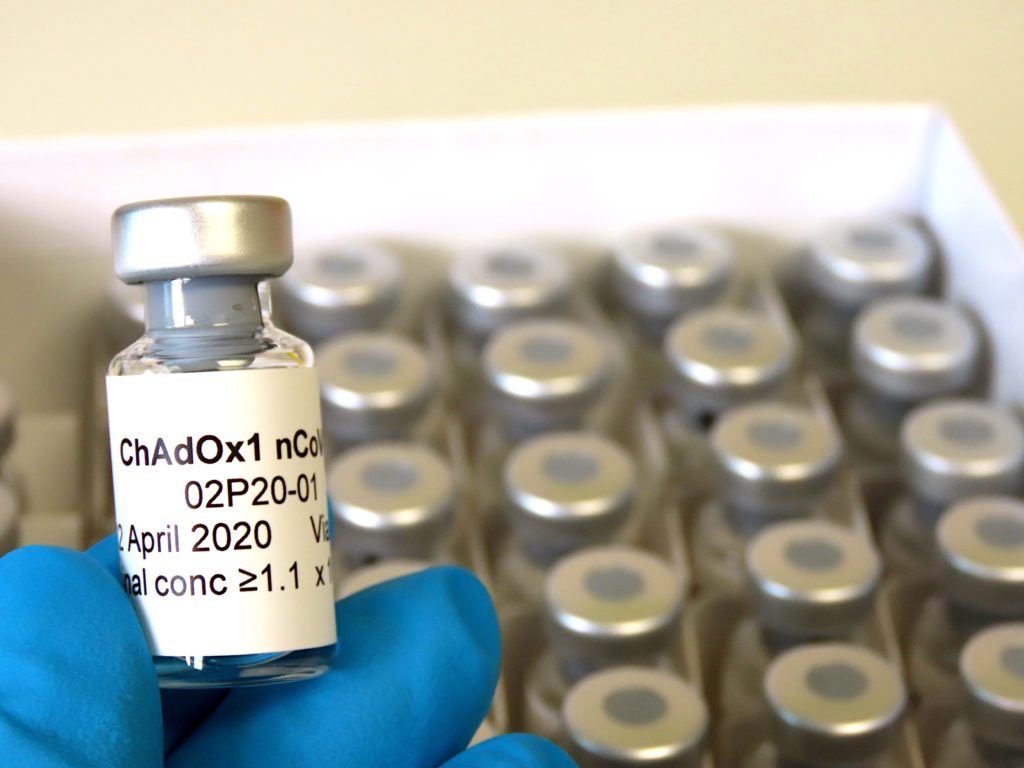Researchers at the University of Oxford have revealed that the efficacy of the Oxford/AstraZeneca coronavirus vaccine is higher at longer prime-boost intervals, and that a single dose of the vaccine is 76% effective from 22 to up to 90 days post-vaccination.

In their findings, published in Preprints with The Lancet, they report on an analysis of additional data to include information from the trial up to 7December 2020, which includes a further 201 cases of primary symptomatic COVID-19. They report that the effect of dosing interval on efficacy is pronounced, with vaccine efficacy rising from 54.9% with an interval of less than six weeks to 82.4% when spaced 12 or more weeks apart.
They also detail that a single standard dose of the vaccine is 76% effective at protecting from primary symptomatic COVID-19 for the first 90 days post-vaccination, once the immune system has built this protection 22 days after the vaccination, with the protection showing little evidence of waning in this period.
Professor Andrew Pollard, Chief Investigator of the Oxford Vaccine Trial and co-author of the paper, said: “These new data provide an important verification of the interim data that was used by more than 25 regulators including the MHRA and EMA to grant the vaccine emergency use authorisation.
“It also supports the policy recommendation made by the Joint Committee on Vaccination and Immunisation (JCVI) for a 12-week prime-boost interval, as they look for the optimal approach to roll out, and reassures us that people are protected from 22 days after a single dose of the vaccine,” said Prof Pollard, the NIHR Oxford BRC’s Co-Theme Lead for Vaccines.
The exploratory analyses presented in this preprint paper suggest that it is the dosing interval and not the dosing level which has a great impact on the efficacy of the vaccine. This is in line with previous research supporting greater efficacy with longer prime-boost intervals done with other vaccines such as influenza, Ebola and malaria.
The authors also report further on the potential for the vaccine to reduce transmission of the virus, based on swabs obtained from volunteers in the UK arms of the trial with a 67% reduction after the first dose of the vaccine.
They also hope to report data regarding the new variants in the coming days, and expect the findings to be broadly similar to those already reported by fellow vaccine developers.
The NIHR Oxford BRC provided crucial funding to get the trial up and running and then helped to fund an evaluation of the safety of the vaccine.
The ChAdOx1 nCoV-19 vaccine, now known as AZD1222 co-invented by the University of Oxford and its spin-out company, Vaccitech, is being trialled by the University of Oxford’s Jenner Institute and Oxford Vaccine Group. The team started working to develop a vaccine against coronavirus in January 2020.
Developed at the Jenner Institute, the recombinant adenovirus vector ChAdOx1 nCoV-19 uses a viral vector based on a weakened version of the common cold virus (adenovirus) containing the genetic material of SARS-CoV-2 spike protein. After vaccination, the surface spike protein is produced, which primes the immune system to attack COVID-19 if it later infects the body.
Over 50,000 people to date have taken part in clinical trials of The ChAdOx1 nCoV-19 vaccine sponsored by the University of Oxford and AstraZeneca, and many more have received the vaccine through public vaccination programmes following emergency use licensure. It has been shown to be safe and well tolerated, although it can cause temporary side effects, such as a temperature, flu-like symptoms, headache or sore arm.
The potential vaccine entered Phase III clinical trials in May to study safety and efficacy in healthy volunteers. In total, nearly 24,000 volunteers have joined the University of Oxford sponsored trial, in sites around the UK (approximately 12,000 volunteers), Brazil (approximately 10,000 volunteers) and South Africa (approximately 2,000 volunteers). Interim efficacy and safety data were published in The Lancet in December, including an extensive safety database of over 74,000 ‘person months’ of safety data follow-up.